The Internet is an amazing place that’s full of educational material, if you know where to look. Even better, many of these resources are free, although some may require an initial purchase or a subscription. Whether you’re a parent who’s home-schooling or hoping to supplement your child’s learning at home or you’re a teacher looking for fun ways to engage your students, there are apps and websites that cover almost any topic you can imagine!
StepsMethod 1Method 1 of 3:Pre-K–1st Grade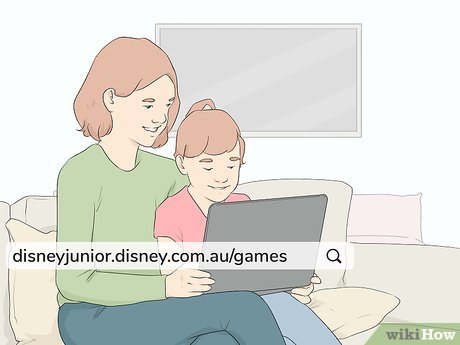
1Visit Disney Jr. for educational games and videos for younger kids. Disney Jr. takes favorite characters like Mickey and Minnie Mouse, Doc McStuffins, and more, and puts them into fun, educational games and videos for children. For instance, kids can learn about the seasons with Animal from Muppet Babies, solve puzzles featuring a variety of characters, or learn about manners with Fancy Nancy.XFind the fun at http://disneynow.com.You can also download the Disney Now app to your child’s device for instant access to shows and games.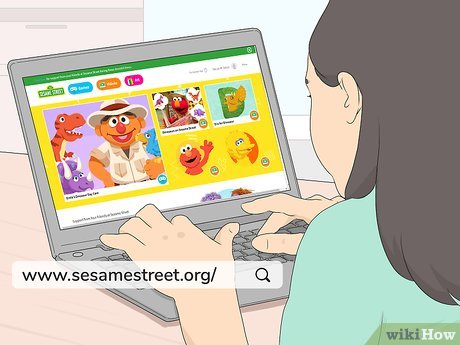
2Play games with Elmo and friends at Sesame Street. The Sesame Workshop is the nonprofit educational organization behind Sesame Street. Their website helps support their goal of making learning fun, using games, printables, and video. They also provide tips for kids on how to be healthy, happy, and kind at home.XFor instance, your child can learn about the alphabet with Letter Dance Party, or they can watch a video with Elmo to learn about setting up a great morning routine!For more information, visit https://www.sesamestreet.org/.
3Try Nick Jr, for even more printables and games from beloved characters. If your kid is crazy about Paw Patrol, Bubble Guppies, and Umizoomi, they’ll love Nick Jr’s website. It’s full of educational games and videos, and it’s easy to sort through them by character, so you can quickly jump to your child’s favorites.XTry learning about emotions with the Finding Feelings game, explore science with Ryan, or experiment with creating your own tunes with the Music Maker game!Check out the fun at https://www.nickjr.tv/.There’s also a Nick Jr. app that contains the same content available on the website.
4Sign up for ABC Mouse to help teach kids basic reading and math. ABC Mouse is a subscription-based app that helps children ages 2–8 learn letters, numbers, phonics, and more. The app allows your child to progress at their own pace, and it uses songs, stories, games, and more to keep the lessons feeling fresh.XTry a 30-day free trial at https://www.abcmouse.com/abt/homepage.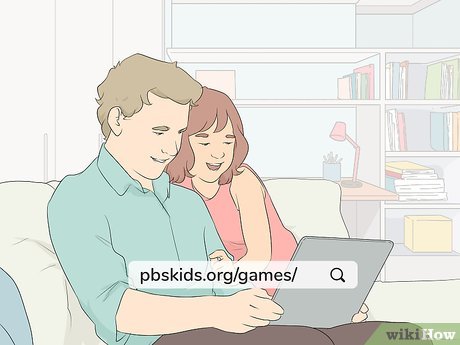
5Support educational programming with PBS Kids. PBS Kids television programming is geared toward teaching children about a variety of subjects, and their website does the same thing. Younger kids can learn things like letters, numbers, and manners with friends like Daniel Tiger and Elmo, and older kids can learn about math, science, and social skills from characters like Odd Squad and the Wild Kratts.XBrowse the games by visiting https://pbskids.org/games/.You can also download the PBS Kids app for videos or the PBS Kids Games app for Apple, Android, and Amazon devices.
6Check out Starfall to help young students learn to read. Starfall.com is a nonprofit organization designed to help children learn to read through phonics and sight words. It’s specifically geared toward younger children, as well as ESL and special needs students, with an emphasis on making the games fun and entertaining. Many of the games are free, although they do have a paid membership program to unlock all of the content.XFor example, kids can learn enjoy sing-along songs, rhymes that help teach vocabulary and reading, and fun games that teach basic math skills like addition and subtraction.To learn more, visit https://www.starfall.com/h/.
7Help young students learn a new language with Little Pim. The easiest time to learn a new language is when you’re very young, and Little Pim taps into that with their app, catering their content for kids 6 and under. You can choose from 12 different languages, including Spanish, French, Chinese, and Arabic. If you’d like, you can even let kids learn multiple languages at one time.XA monthly subscription to Little Pim is US$4.99. To learn more, visit https://www.littlepim.com/.
8Find resources for young students, teachers, and parents at Jumpstart. Jumpstart is a website that provides students with information on a variety of subjects including reading, math, English, science, social studies, geography, art, and more. The resources are searchable by grade, including preschool and kindergarten. In addition, they provide assessment tools that you can use to track your students’ or children’s progress.XFor instance, your child can improve their counting skills with fun mazes. They can also practice shapes, colors, letters, and phonics, all in a fun game format.To learn more, visit https://www.jumpstart.com/parents/resources.Method 2Method 2 of 3:2nd Grade–5th Grade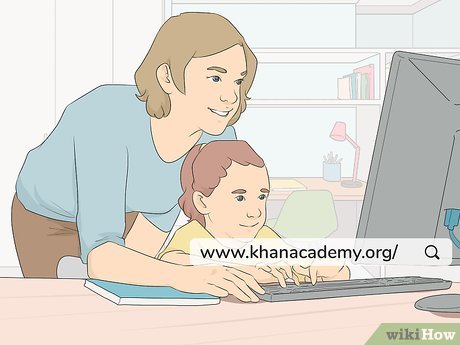
1Check out Khan Academy for a variety of video lessons. Khan Academy is a nonprofit organization that offers thousands of educational videos for kids ages 4–18. Their math section, for instance, covers everything from early counting and basic arithmetic through advanced topics like statistics, trigonometry, and calculus. They also have videos on subjects like history, government, grammar, art history, storytelling, and music.XVisit Khan Academy at https://www.khanacademy.org/.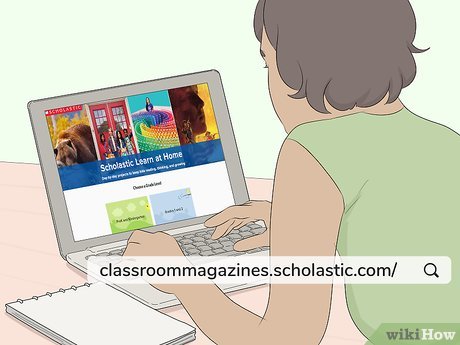
2Try the Scholastic Learn at Home program for new projects each day. Scholastic Classroom Magazines have been a trusted resource for parents and teachers for years. Their online Learn at Home site takes that a step further by providing a different set of free educational books, projects, and videos for each day of the week. You can even choose different reading levels depending on the age of your student.XTo learn more, visit https://classroommagazines.scholastic.com/support/learnathome.html.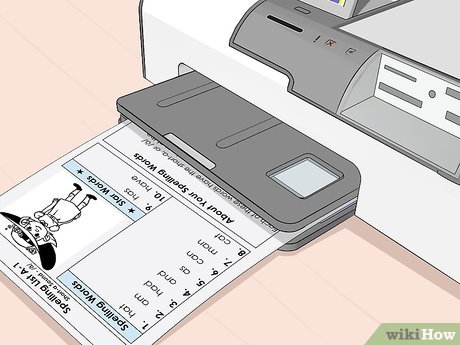
3Download and print worksheets for your child to work on. Digital learning is fun and exciting, but sometimes students focus better when they have a pencil and paper in front of them. Fortunately, there are a number of websites where you can find free printables for your home or classroom. For instance:Find a huge array of worksheets, including holiday-themed coloring sheets, brain-teasers, maps, and more at https://www.superteacherworksheets.com/.Print worksheets for students from preschool through 5th grade, including color-by-number, times tables, and letter-tracing sheets at https://www.education.com/worksheets/.You can find both English and Spanish worksheets for early learners at https://www.greatschools.org/gk/worksheets/.4Try Adventure Academy for a fun learning experience for older kids. Adventure Academy is a program made by the creators of ABC Mouse, and it’s a great way help kids between the ages of 8-13 improve their math, science, and reading skills. Kids can create their own character, then explore the Academy’s campus, interact with other players, and complete a variety of activities that are tailored to your child’s skill level.XThe app also gives parents full control over the experience, including allowing them to completely disable in-game chat options.Visit https://www.adventureacademy.com/ to learn more.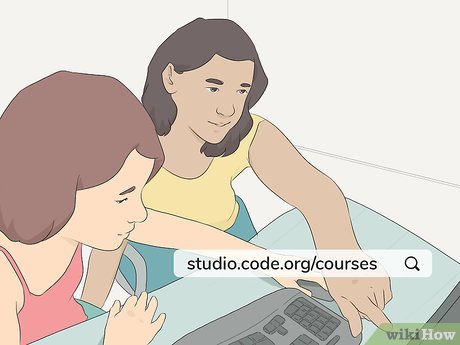
5Help students learn programming at Code.org. Code.org teaches computer science to children from grades K-12. Their lessons are broken into hour-long tutorials, walking kids through the steps to coding their very own programs! In addition, these lessons are available in over 45 languages.XExplore their courses at https://studio.code.org/courses.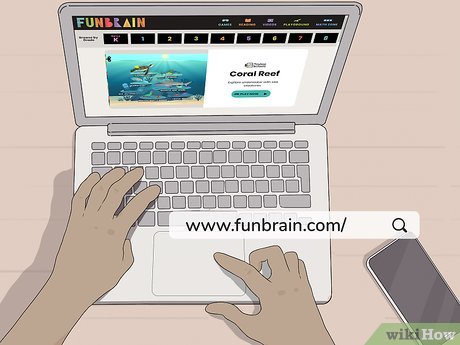
6Pick age-appropriate games that teach math and reading at Fun Brain. Fun Brain offers activities for kids from pre-K through junior high. Many of the games center around math concepts like the number line, but they also provide free texts of books your kids will actually want to read.XSome of the games you’ll find include Math Baseball, Shape Invasion, Grammar Gorillas, and more!Visit https://www.funbrain.com/ to learn more.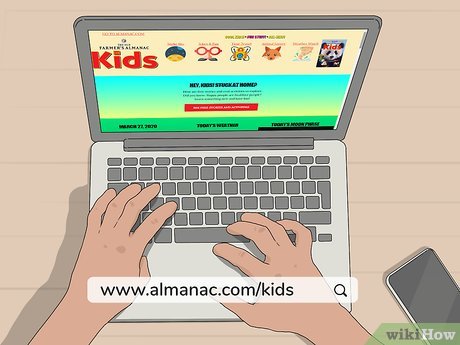
7Explore the natural world with Farmer’s Almanac. The Old Famer’s Almanac for Kids provides students with a ton of fun, interesting facts about things like astronomy, history, weather, and animals. The site also offers games, puzzles, and riddles for kids.XFor instance, the kids page offers information about different types of clouds, so you could read all about them, then go outside together to see what you can spot!Visit them at https://www.almanac.com/kids.
8Find fun science experiments with National Geographic Kids. When you visit the National Geographic Kids website, you’ll find games and videos that will teach kids about plants, animals, geography, different cultures, and more. In addition, they have lots of ideas for science experiments that you can try at home, like how to make squishy eggs or ghost gloves.XCheck out everything they have to offer at https://kids.nationalgeographic.com/.To jump straight to the science projects, visit https://kids.nationalgeographic.com/explore/science/science-lab/.
9Find free books and audiobooks for students of all ages. Books are a great way to teach kids about important qualities like empathy, adventure, and independence. Free E-books and audiobooks can help open your kids up to a wealth of new material that will help enrich them and inspire a lifelong love of reading.XGet public domain audiobooks by visiting LibriVox at https://librivox.org/.Check out the International Children’s Digital Library for selections in a variety of languages at http://en.childrenslibrary.org/.Find free downloadable E-books from sites like https://www.epubbooks.com/ and https://www.gutenberg.org/.
10Get students engaged with Learning Games for Kids. Kids love playing video games, so why not have them learn at the same time they’re having fun? This site features games that will let kids learn things like math, spelling, vocabulary, and the names of the 50 U.S. states.XFor example, LetterFall can help kids improve their spelling skills, while the Typing Challenge can help kids learn to type faster.Start the fun by visiting https://www.learninggamesforkids.com/.
11Try an online pen-pal project to connect with students from around the world. Digital communication has made it easier than ever to help students get in touch with kids from almost any country. This can be a great way to help learners get a first-hand view of what other children experience in different parts of the world!XFor instance, the website PenPal Schools allows pen pals to work together on a variety of projects. You can learn more by visiting https://www.penpalschools.com/.At The Teacher’s Corner, you can find pen pals by selecting your child’s grade, then choosing the location you’d like to connect with from a world map. Just visit https://www.theteacherscorner.net/penpals/.Get your classroom connected with another class, then have students collaborate on projects together by signing up at https://www.epals.com/#/connections.Method 3Method 3 of 3:Middle School
1Learn about a variety of historical figures with the BBC. The BBC’s website has a category called History for Kids that covers things like ancient history, world history, and British history. They use games and quizzes to make learning fun, and they even have a section with ideas for hands-on projects like making your own cave art.XFor a fun way to learn typing, try the Dance Mat Typing game on the BBC website!Visit http://www.bbc.co.uk/history/forkids/ for more information.
2Check out the digital Encyclopædia Britannica for a wealth of knowledge. Encyclopædia Britannica has been a trusted source for learners since 1768. Their website is full of fascinating facts covering every topic imaginable, including science and technology, geography, politics, sports, history, pop culture, and more.XTo learn more, visit https://www.britannica.com/.For a fun daily historical fact, visit Brittanica’s On This Day page at https://www.britannica.com/on-this-day.
3Teach math with fun games by visiting CoolMath.com. CoolMath.com has tons of free games that help students learn basic math skills. Games like 2048 and Sudoku help teach critical thinking, addition, and more, while games like Run a Lemonade Stand teach money management. They even have online versions of strategy games like Chess and Checkers.XTo learn more, check out https://www.coolmath.com/ or their sister sites https://www.coolmath4kids.com/ and https://www.coolmathgames.com/.
4Check out science and art at the Exploratorium’s website. San Francisco’s Exploratorium is a museum that features exhibits on science, art, and more. Their website allows students to explore these topics as well, including tons of ideas for science projects you can try at home.XSee some of the fun activities they have to offer, like making a hand-held heat engine or learning about seed germination, by visiting https://www.exploratorium.edu/explore/activities.
5Find science-based lessons at Mystery Science. Mystery Science encourages parents and educators to teach kids about science in short lessons. They provide activities, videos, and facts that will keep kids fascinated by the world around them. These lessons are geared toward children grades K-5.XAccess to the full site requires a membership, but if you’re a teacher or homeschool parent, there are free lessons you can use. To learn more, visit https://mysteryscience.com/.
6Visit CK-12 to access online STEM textbooks. The CK-12 Foundation provides students with lessons based on science, math, social studies, and more. Each of those topics is broken down into more specific categories, like Earth Science, Physics, and Biology, or you can choose what’s appropriate based on your child’s grade.XDig into the topics at CK-12 by visiting https://www.ck12.org/student/.
7Have students learn a new language with Duolingo. Duolingo turns makes it fun to study languages like Spanish, French, German, and Chinese by integrating learning with games. Playing just a few minutes a day can help anyone pick up basic grammar and vocab, and students get immediate feedback, so they’ll know where they need to improve right away.XMake a free account by visiting https://www.duolingo.com/.You can also download the Duolingo app on Android or iOS.
8Help your kids improve their reading comprehension at Read Theory. Read Theory’s program can help anyone from kindergarteners through adult learners get better at understanding what they read. The site has worksheets and exercises that you can use in the classroom or at home, and it automatically adjusts to each students’ reading level.XTo create a free account, visit https://readtheory.org/.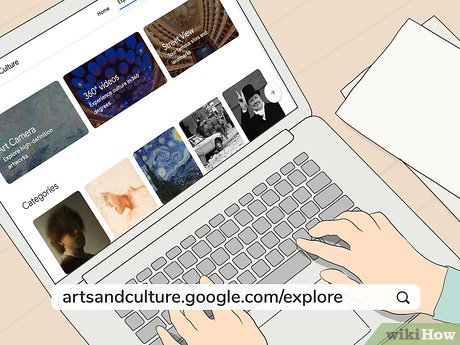
9Try virtual tours from Google Arts & Culture. With Google Arts & Culture, you can access over 1200 museums and archival collections from around the world. These include 360° video tours of museum exhibits and artifacts, street views of famous landmarks, collections from specific artists, and in-depth exploration of historical events. With that much content, there will always be something new to dig into!XTo learn more, visit https://artsandculture.google.com/explore.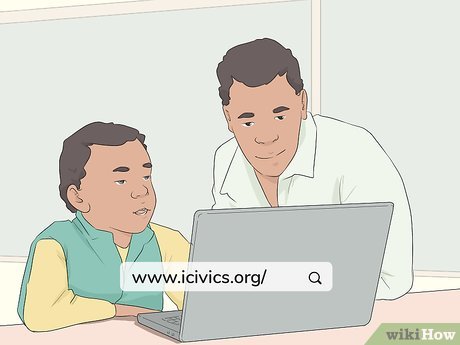
10Learn about the US government with iCivics. iCivics is a free resource designed to teach students about their civic rights and responsibilities through a combination of video games and articles. For instance, students can play games where they compete to win the White House or sign executive orders. Notably, the site was founded by US Supreme Court Justice Sandra Day O’Connor.XExplore the fun at https://www.icivics.org/.








